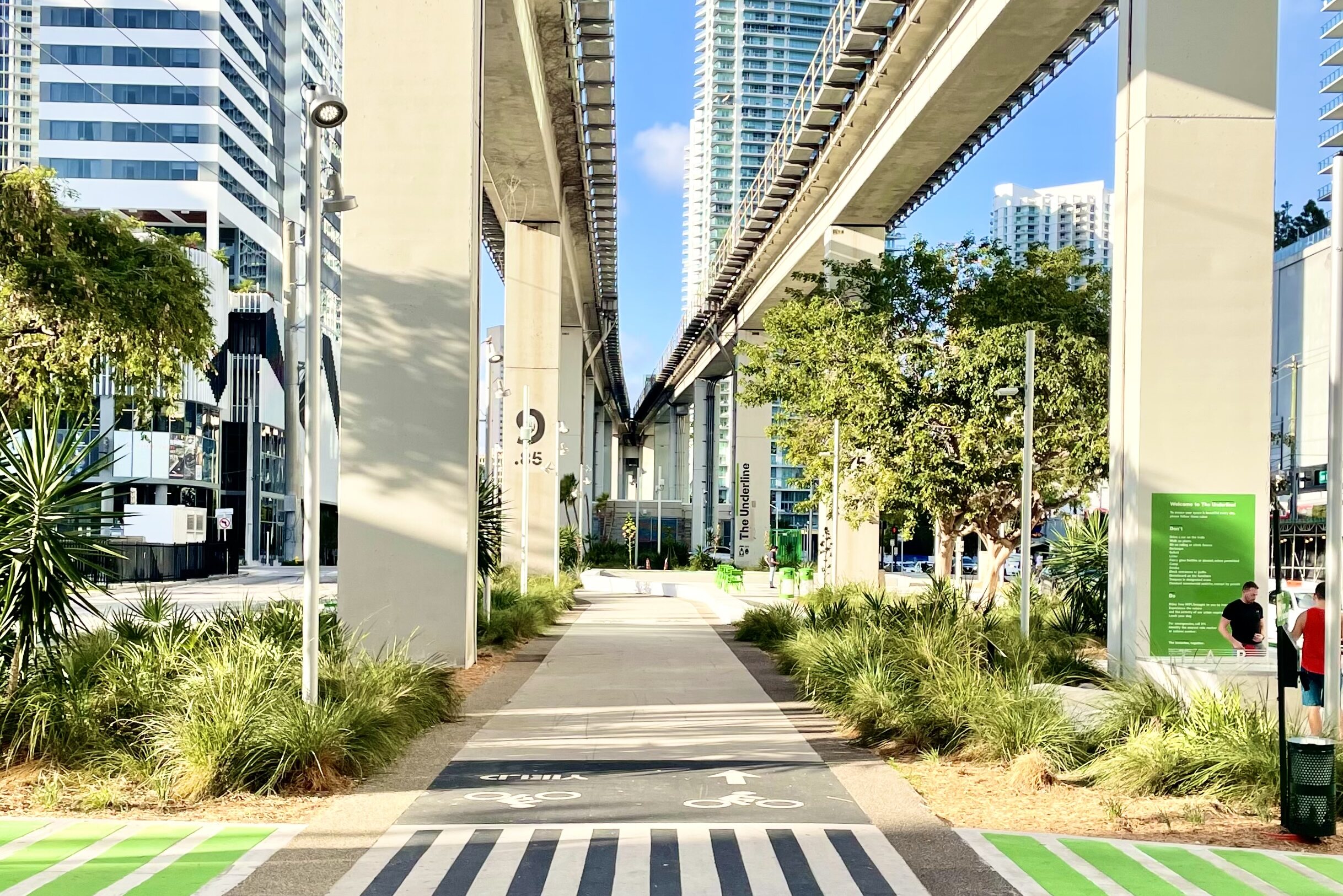
Earth Month at The Underline
In celebration of the 52nd Earth Day, The Underline welcomes you to the Brickell Backyard to get to know some of the native plants that play an important role in the ecosystem of The Underline as it transforms the land beneath the Metrorail system into a 10-mile linear park, urban trail, and premiere public arts destination.
The theme for this year’s Earth Month “Invest in Our Planet”, lives at the core of The Underline’s mission. Creating safe beautiful spaces for families, visitors, neighbors, community leaders, business owners, and artists to co-create through culture, art, and wellness events is an investment in our community, our city, and our planet. Incorporating native plants that are adapted to the local climate and soil conditions into The Underline’s pathways and trails attracts pollinators to the area, helping the plants thrive, providing food and unique habitat for native butterflies, other insects, and birds.
We’ve chosen five plants that play an important role at The Underline. As you walk The Underline, search for QR codes next to these plants that you can scan with your smartphone or tablet. Once you scan with your smartphone or tablet, you’ll see the name, photo, description, and fun fact about each plant.
1. Porter Weed
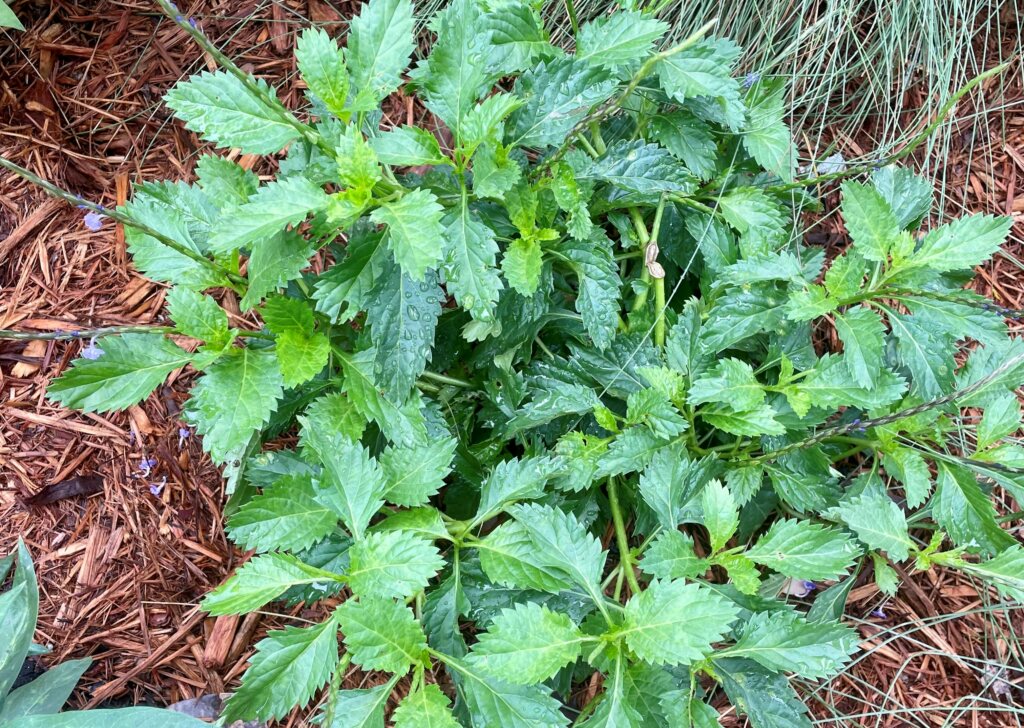
Blue porterweed (Stachytarpheta jamaicensis) is a low-growing, sprawling wildflower. Found naturally in coastal dunes, shell mounds and disturbed areas, it typically flowers in the summer, but may flower year-round in South Florida. It is an excellent addition to a butterfly garden, as it is the host plant of the Tropical buckeye and is a nectar source for many butterfly species including the Clouded skipper , Gulf fritillary Red admiral , Monarch, and Julia .
The genus name Stachytarpheta is from the Greek stachys, meaning “spike,” and tarphys, meaning “thick” or “dense.”
Fun facts:
Blue porterweed isn’t just for pollinators. Much of the plant is also edible to humans! Flowers may be eaten raw and have a mushroom-like flavor. Flower spikes can be used as you would a bay leaf to season soups or stews. Leaves can be dried and steeped into a foamy tea or brewed into beer. This foaming property is likely the origin of the common name, porterweed, referring to the porter style of beer the tea resembles.
2. Coontie
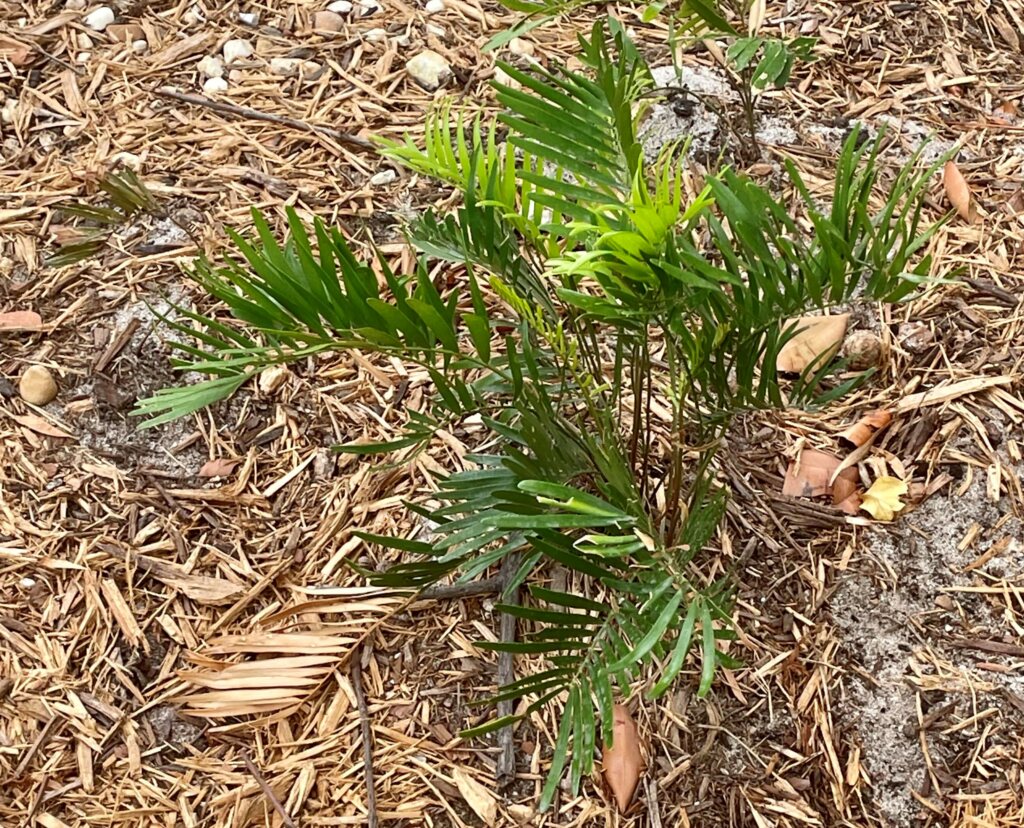
Coontie is the only cycad native to Florida.Like all cycads, it is a gymnosperm and doesn’t produce any flowers or fruits. Instead, it reproduces by producing seeds in seed cones and pollen in pollen cones.
They are naturally found in pine flatwoods and other places where pine trees predominate. The seeds of coontie are a food source for jays and other large birds, as well as for some small mammals. More importantly, the plant is a food source for the caterpillars of the atala, a butterfly that was once thought to be extinct.
Fun Facts:
Although the plant is naturally poisonous to humans, members of the Seminole tribe developed a way of preparing the roots and underground stems so that the toxins were extracted and the remaining starch could be used for baking bread.
3. Spiderwort
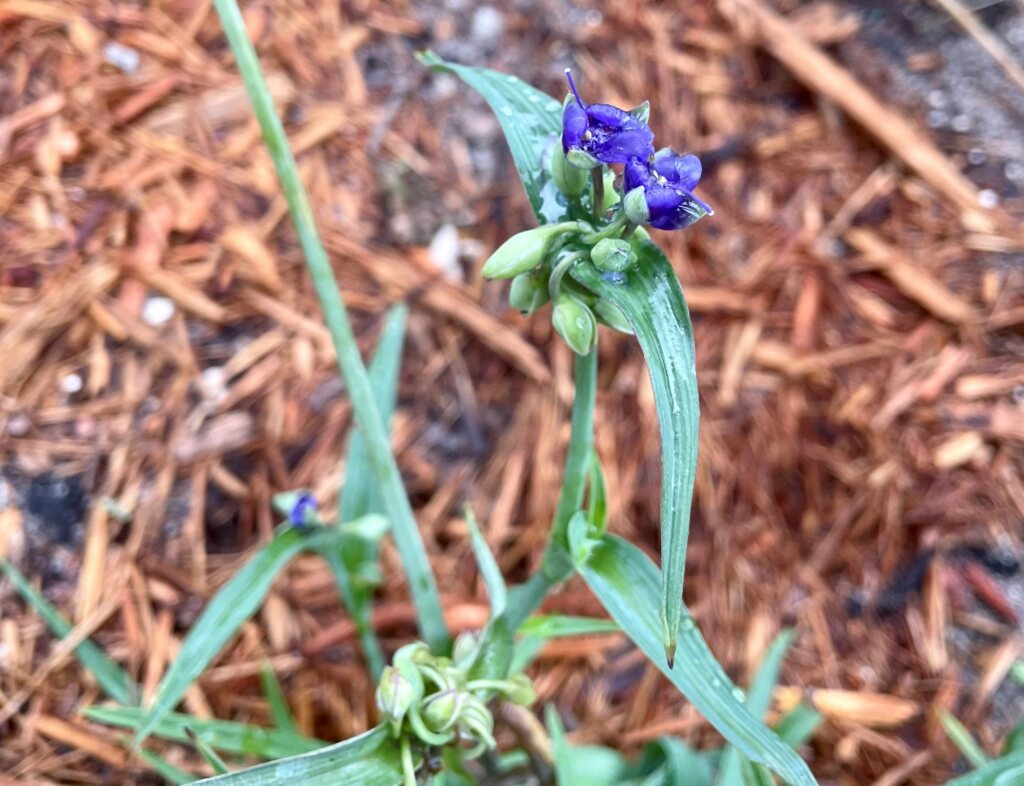
Spiderwort (Tradescantia ohiensis) is a Florida Native perennial wildflower. Its showy, bluish-purple flowers are three-petaled and born in clusters atop branched stems. Flowers may be blue, purple, pink or even white. Leaves are light green and strap-like, giving the plant a grassy appearance, particularly when not in bloom.
Fun Facts
Spiderwort is not only attractive, it is also edible. Try the flowers fresh on a salad or candied for a sweet treat. Stems and leaves can be eaten raw and leaves can also be cooked. The leaves are mucilaginous (resembling jelly/mucus) the “juice” can be used to soothe insect bites in the same way one would use aloe.
Did you know that the stamens in a spiderwort flower can detect radiation? Low level exposure will turn the bluish filament hairs on the stamen pink!
4. Firebush
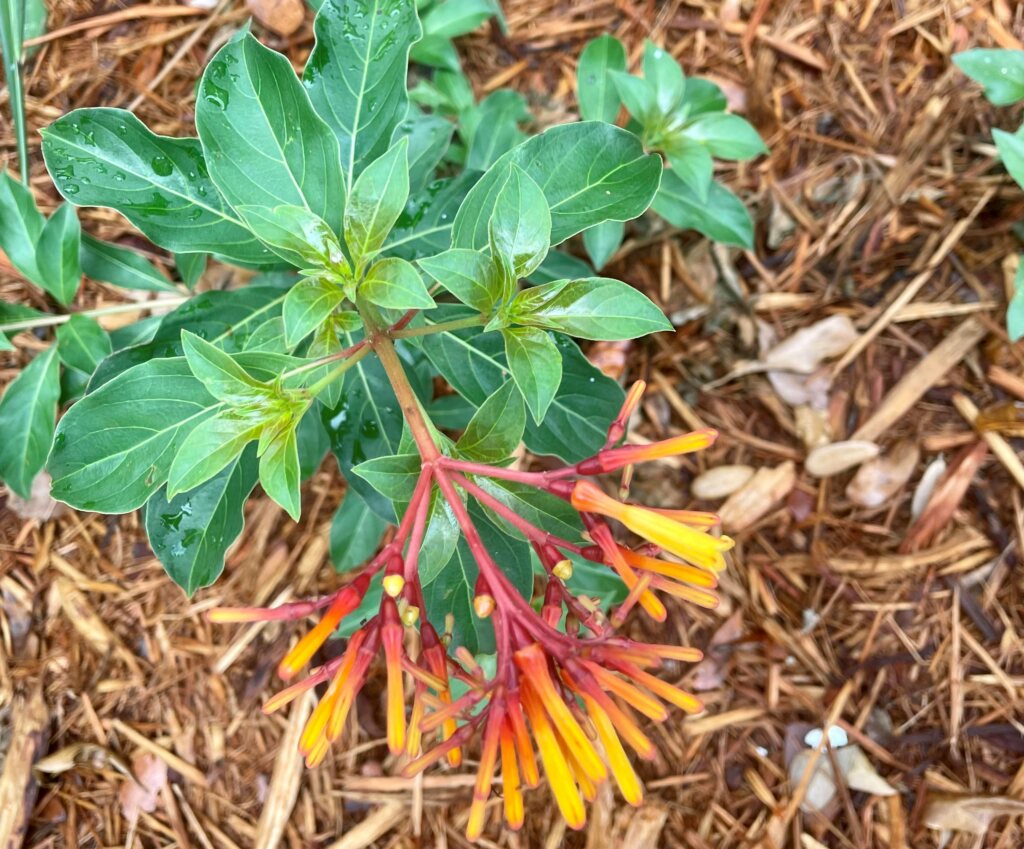
Firebush (Hamelia patens) is a perennial or semi-woody shrub that is naturally found in hardwood hammocks and coastal and upland forests of Florida. Typically blooming all year round in South Florida, gardeners love firebush because it produces flowers from late spring until the first frost, and the bright red flowers attract hummingbirds and butterflies, including the zebra longwing and gulf fritillary butterflies. Song birds also like to feed on the berries.
The genus name Hamelia honors the French botanist Henry Louis Hamel de Monceau (1700–1782). The species epithet patens is Latin for “spreading” or “to be open” and refers to the plant’s growth characteristics.
Fun facts:
The reddish purplish berries of the firebush are edible, however not very tasty. The plant’s leaves, stems and flowers also have many medicinal properties including anti-inflammatory, analgesic and diuretic treatments.
5. Smooth Agave
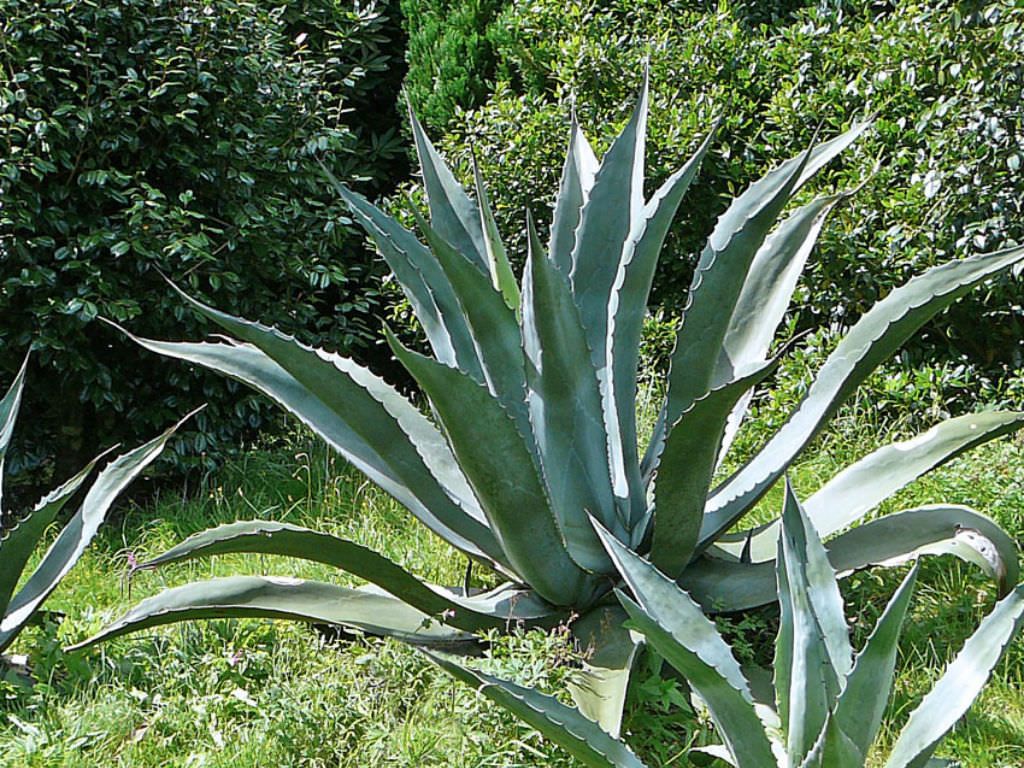
Smooth Agave, although not native, is well adapted to the sunny South Florida climate. Believed to have been originated in Mexico, it is also cultivated in Europe and in the western United States. After eight to ten years, the agave develops an eight- to ten-foot high branched stalk with pale, yellow blooms. The flower stalk appears at the end of its life cycle; however, the plant also produces an abundance of offsets for reproduction.
Fun Facts:
Agave varieties don’t require a lot of water, and will thrive in drought conditions, even in full sun! Some varieties of agave are also used for culinary and medicinal reasons, some varieties can be used to make sweeteners, while others are thought to be used to keep blood sugar levels at a minimum for diabetics!